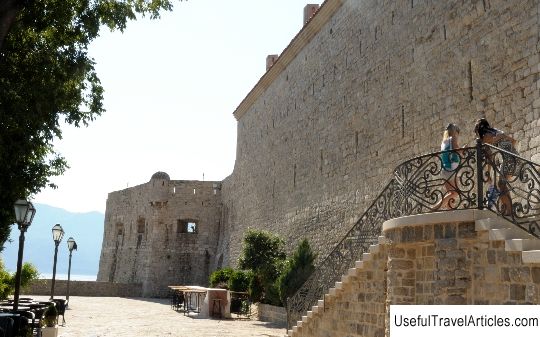Citadela description and photos - Montenegro: Budva
Rating: 8,2/10 (2932 votes) 
Citadela description and photos - Montenegro: Budva. Detailed information about the attraction. Description, photographs and a map showing the nearest significant objects. The title in English is Citadela. Photo and descriptionA monumental complex of buildings, the Citadel fortress - one of the pearls of old Budva. This significant medieval fortification is located on the southern part of the rocky reef that surrounds the city. The complex of buildings includes fortress walls, gates, buildings and squares of the former barracks, as well as the ruins of the Church of St. Mary, partially preserved from the 15th century. The Citadel wall is decorated with the symbol of Budva - a bas-relief depicting two intertwining fish. Behind the story of the appearance of the bas-relief lies the legend of two lovers who could not get married against the will of their parents. They threw themselves into the depths of the sea, where, according to legend, they reunited forever, becoming fish. Several churches are also located in the vicinity of the Citadel. Operating since 1804 and up to now - the Orthodox Church of the Holy Trinity, which was built instead of the church of the Podostrog monastery. Here, in front of the church, is buried a writer and politician known in Montenegro, Stepan Mitrov Ljubica. The Church of St. John is also located near the Citadel. Until 1828, this Catholic church was the seat of the city diocese of Budva. A library with unique copies of books and a rich archive have survived to this day. Another church located near the Citadel is St. Sava. Here scientists have recently discovered frescoes, presumably dated to the XII century. The oldest church in Budva is the church of St. Maria de Punta - in support of this, the Latin inscription on the church stone is dated 840. In addition, on the territory of the Citadel there is a private collection of exhibits dedicated to the history of the Balkans. Among the exhibits are many books (in a single copy), historical maps, hand-drawn.      We also recommend reading Odessa fortress description and photo - Ukraine: Odessa Topic: Citadela description and photos - Montenegro: Budva. |




